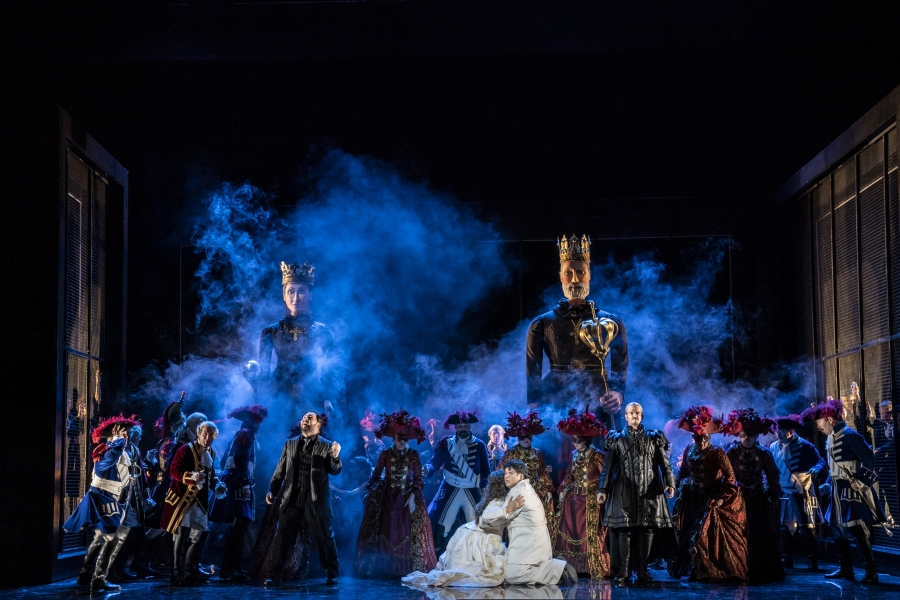
The prospect of WNO staging Verdi’s Les vêpres siciliennes is an exciting one. The last time it was performed by WNO was in 1954. Further, this staging (a joint production with Theater Bonn) is of the French grand opéra version, the full five acts sung in French with the ballet section included, not the revised Italian version; until relatively recently, the grand opéra version had been little performed.
Les vêpres siciliennes was originally staged in Paris in 1855, after Verdi had been commissioned by the Paris Opéra. The subject Verdi selected for his new work had direct relevance for France. The Sicilian Vespers was an historical event, the uprising in Palermo in 1282 against the rule of Charles I of Anjou, who had become King of Sicily in 1266. The uprising of the Sicilians, which resulted in a massacre of the French inhabitants of Palermo, was encouraged by both Peter III of Aragon and the Byzantine emperor Michael VIII Palaiologos. In the opera the role of Spain and Byzantium are alluded to, but the focus is very much on the personal within the political. The villain of the piece is Guy de Montfort the Governor of Palermo. In opposition to him stands a trio: the doctor Jean Procida who has returned from exile, the Duchess Hélène whose brother has been executed by the French and who seeks revenge, and Henri who is in love with Hélène. Key also within the opera is the theme of the sexual violence of the French against the Sicilians, underscored by the recalling of the fate of the Sabine women at the hands of the Romans.



This production, directed by David Pountney, mirrors the dark and intense story with a dark and intense setting. Black and grey is the overwhelming palette, offset by the red, white and blue of the French soldiers. The medieval setting is not evoked strongly; characters are dressed in more modern and mixed styles. The subjugation of the Sicilians is heavily emphasised; at the start they are down on their knees while French soldiers literally tower over them atop moving step ladders, gliding about like Daleks. Standing out amongst the leading quartet is the figure of Hélène, performed with great dignity, strength and feeling by Anush Hovhannisyan, though Jung Soo Yun (Henri), Giorgio Caoduro (Montfort) (both pictured above) and Wojtek Gierlach (Procida) also impress.
As remarked, a notable element of this production is the inclusion of dance. It is deployed here not just as mere entertainment but with dramatic effect, reflecting upon the theme of sexual violence and the role of Montfort himself in this. The dancing Sicilian couples and the dancing skeletons are particularly memorable, and credit must be paid to the creativity of the choreographer Caroline Finn, currently Resident Choreographer of the National Dance Company Wales.
There is no doubt that not all the artistic choices made will appeal to everyone’s tastes, but I found the production wonderfully dark and intense, and beautifully sung and played. The production presents a rare opportunity to see and hear this opera, an opportunity that should not be missed.
Touring: wno.org.uk